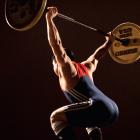 You don’t need to be a bodybuilder to hear about anabolic steroids. They are constantly in the news. One day a track athlete may fail a drug test; the next day it’s revealed that major league baseball players used the drugs to help rewrite the record books. What isn’t generally known is how the development of anabolic steroids came about and when it happened.
You don’t need to be a bodybuilder to hear about anabolic steroids. They are constantly in the news. One day a track athlete may fail a drug test; the next day it’s revealed that major league baseball players used the drugs to help rewrite the record books. What isn’t generally known is how the development of anabolic steroids came about and when it happened.
The history is significant because of persistent rumors that many of the great bodybuilders of yesteryear used early versions of testosterone and anabolic steroids. Another common rumor is that Hitler used testosterone and even supplied it to his soldiers during World War II. That one seems to have some credence, as testosterone was initially isolated by German scientists.
Still, the notion that a substance could produce gains in strength and muscle occurred long before Hitler was born. More than 6,000 years ago farmers noticed that animals could be more easily domesticated if they were castrated. The ancient Egyptians and Romans believed that animal testicles and sex organs had potent healing properties. The ancient Greeks took it a step further by encouraging athletes who competed in the first Olympic Games to take various plant extracts and testicular extracts. It’s ironic that today, thousands of years later, many of the current “testosterone-boosting” supplements sold are also plant extracts.
John Hunter was a famous Scottish surgeon known for his contributions to the understanding of digestion, venereal disease, dentistry and other areas of medical science. He is less well-known, however, for conducting the first testicular transplant in 1789, in which he removed a testicle from a rooster and implanted it in a hen. History does not record the results of that experiment.
Hormonal research remained dormant until 1849, when Arnold Berthold, a zoo curator, discovered a “blood substance” in roosters that affected their appearance and behavior. He would first castrate the roosters and then re-implant their testicles. When castrated, the birds’ combs shrank, they lost interest in hens, and they also appeared to lose all aggressive instincts. The effects were reversed when the testicles were put back, despite the fact that nerves were cut in the process. While Berthold’s work certainly seemed to point to something going on, it was largely ignored for the next 50 years.
Enter Charles Brown-Sequard, a French physiologist and Harvard professor who is considered one of the founders of modern endocrinology, the study of hormones. Brown-Sequard went by the philosophy that the best study subject was yourself, so he took testicular extracts derived from guinea pigs and dogs. In his report published in 1889, Brown-Sequard claimed to have increased his strength, mental ability and appetite after using the extract. Most of his results were actually due to the placebo effect: He believed it would happen, so it did.
In an 1896 paper Austrian physiologist Oskar Zoth suggested injecting athletes with testicular extracts, noting that the extract improved strength and “neuromuscular apparatus.” That, of course, would aid athletes. Zoth and his physician partner self-injected testosterone extracts derived from bulls and then measured the strength of their middle fingers. For that they won the Nobel Prize in chemistry in 1923. Scientists discovered the existence of chemical messengers in the blood in 1902, and the word hormone, which means, “to arouse,” was first applied to them in 1905.
The notorious Austrian physician Eugen Steinach (funny how so many of these early hormone researchers came from the country that would later produce a seven-time Mr. Olympia and movie star) developed the “Steinach operation” to treat middle-aged listlessness. It involved ligation, or tying up the vas deferens, a structure in the testicles. Oddly, this is still done today to make men sterile—it’s called a vasectomy. Steinach did it to boost testosterone. He also implanted testicular grafts. Among the beneficial effects of the procedure was new hair growth and increased sex drive. His patients included Sigmund Freud and other well-known men. More interestingly, Steinach found that when he transplanted male sex organs into female guinea pigs, the animals began to act like the opposite sex.
In the 1920s another quack doctor, Serge Voronoff, removed animal testicles (mostly from monkeys and chimps)and transplanted them into men. He claimed this surgery decreased pain and produced a sense of well-being. There was no mention of any increased appetite for bananas. In 1929 German scientist Adolf Butenandt isolated the first actual hormone, estrone, from the urine of pregnant women, then further isolated 15 milligrams of androsterone, an androgen. Also during the ’20s, at San Quentin State Prison in California, Leo Stanley was busy transplanting the testicles of executed prisoners into living impotent prisoners. When he ran out of human testicles, he turned to using ones from various animals, including rams, deer, sheep and boar.
All of this research piqued the interest of major drug companies, which set up research teams to isolate the mysterious “male factor” in blood. The word testosterone was coined in 1935, the same year that the hormone was isolated from bull testes. Around the same time an article appeared in a German medical journal detailing how to produce synthetic testosterone from cholesterol. The two German scientists who discovered the cholesterol-testosterone synthesis pathway won the Nobel Prize in chemistry in 1939. By then experimentation was already underway using testosterone propionate and methyl testosterone, an oral, as a way of treating hypogonadism, or low testosterone. Scientist Charles Kochakian found that testosterone provided anabolic effects in muscle and other tissues.
The publication of The Male Hormone by Paul de Kruif in 1945 increased the popularity of testosterone enormously. Among the book’s claims were that testosterone increased sex drive and boosted athletic performance. This was the first revelation that testosterone could help athletic performance, and it didn’t escape the attention of bodybuilders in the 1940s, some of whom were said to have used it—although that was never actually documented.
Since testosterone had both anabolic and androgenic effects, an effort was made to produce drugs that would emphasize the anabolic activity, such as muscle and bone building, minus the androgenic effects—including hair loss and prostate gland stimulation. That led to the development of oral anabolic steroids in the 1950s.
Testosterone is not effective when used orally, since it’s rapidly degraded in the liver. The newly developed anabolic steroids had a structural modification that prevented the premature breakdown, making them effective; however, the holy grail of achieving a pure anabolic drug was never achieved. Most of the side effects associated with oral steroids occur because they do retain some androgenic effects, although not as much as with testosterone. Because of their proclivity for building up in the liver, however, oral steroids are considered to be potentially more toxic than testosterone and other anabolic steroid injections.
In 1958 the Food and Drug Administration approved the oral steroid methandrostenolone, better known by the trade name Dianabol. Soviet athletes had used steroids beginning in the early ’50s. In the United States, Dr. John Zeigler is often credited with kicking off the steroid era in bodybuilding by giving Dianabol to Olympic weightlifters at the York Barbell Club in Pennsylvania around 1959. He is also wrongly credited with helping to develop Dianabol. In fact, the credit goes to Swiss chemists at the Ciba company in Switzerland. Zeigler merely prescribed 10 milligrams a day of Dianabol, or two tablets, to the York lifters. Bill Pearl, the ’53 Mr. America and a four-time Mr. Universe, used another oral steroid, Nilevar, in 1959 after hearing about it from some researchers in California. The changes made in Pearl’s physique from 1959 to 1961 were dramatic. Steroids first became popular among international athletes at the time of the ’64 Summer Olympics in Tokyo. They were banned for use in competition shortly after that.
In the 1960s the giant pharmaceutical companies developed thousands of anabolic compounds, the majority of which never made it to the market for various reasons, mostly related to excess toxicity and/or because they weren’t superior to something that already existed. All of those drugs were cataloged in a book published in 1969 by a man named Julius Vida, Androgens and Anabolic Agents: Chemistry and Pharmacology. It later proved to be a bible for some supplement developers, who dug out the old, discarded steroid formulas and sold them as “pro-hormones.” That practice was eventually barred by an amendment to the steroid act in 2005, yet some of the banned steroids still turn up in over-the-counter supplements. Consider that they were never sold in the first place because they were considered too toxic!
The abuse of anabolic steroids by athletes and others led most drug companies to cease production on many of the more popular versions in the early ’90s. That led to the rise of the black market, where popular steroids that aren’t produced officially anymore are still sold, although they’re often manufactured under questionable circumstances. Today’s black-market drugs frequently don’t contain the steroid listed on the label, or they contain either too much or too little of it.
Some are made under unsanitary conditions, resulting in possible contamination with bacteria and heavy metals. The Anabolic Steroid Control Act was passed in 1990, placing steroids in Schedule III, meaning that you can go to jail if you’re caught selling them. An amendment to the law in 2004 outlawed the use of so-called pro-hormones and anything else that is directly converted into testosterone. The only pro-hormone that is legal today is DHEA, which doesn’t effectively convert into testosterone in men.
The history of steroids continues to evolve. In recent years drug companies have been working feverishly to develop a new class of drugs called “selective androgen receptor modulator,” or SARMs, which often aren’t steroids. Their suggested advantage is that they provide many of the anabolic effects of testosterone and anabolic steroids minus the androgenic problems, although even these drugs are not completely free of androgenic effects. They work by interacting with the androgen cell receptor, as do testosterone and steroids, but SARMs don’t convert into DHT or estrogen, so they avoid many of the problems associated with those hormones. While some preliminary studies do show anabolic effects, most are mild and not comparable to those produced by testosterone and steroids. Whether SARMs will eventually replace them, only time will tell.
Editor’s note: Jerry Brainum has been an exercise and nutrition researcher and journalist for more than 25 years. He’s worked with pro bodybuilders as well as many Olympic and professional athletes. To get his new e-book, Natural Anabolics—Nutrients, Compounds and Supplements That Can Accelerate Muscle Growth Without Drugs, visit www.JerryBrainum.com. IM














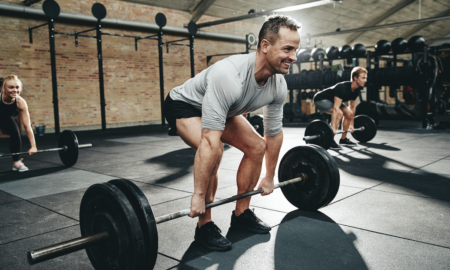
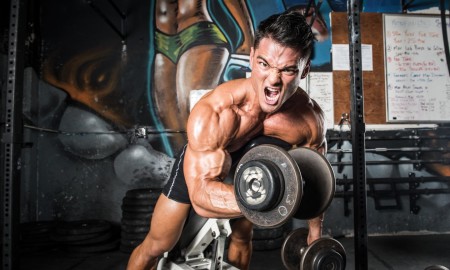

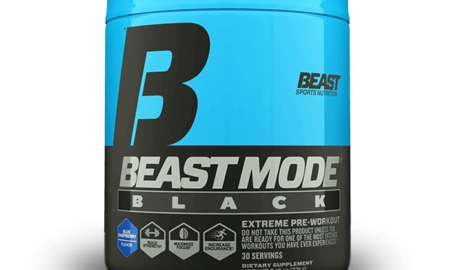
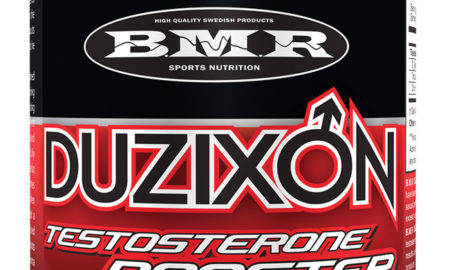
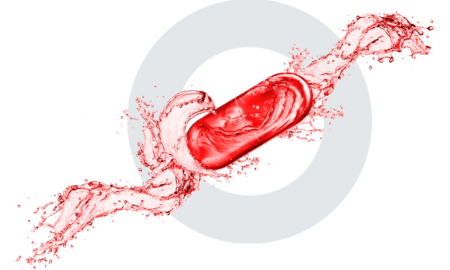
You must be logged in to post a comment Login